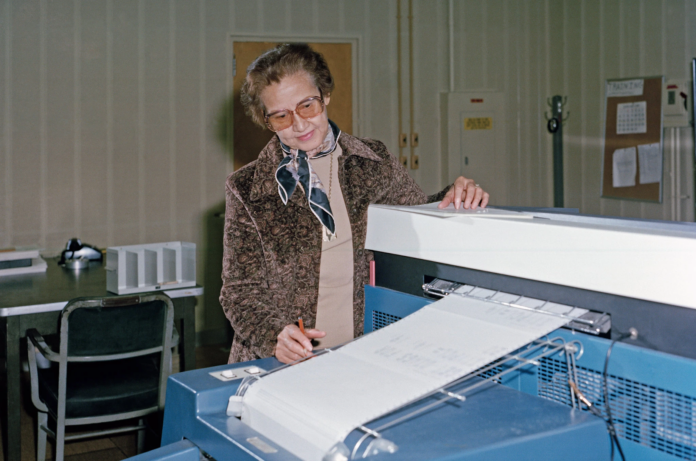By Grace Hwang
Katherine Johnson, NASA mathematician and trailblazer for racial and gender equality, died at age 101 on February 24. Even though the 2016 film Hidden Figures brought her achievements to light, many people are still unfamiliar with her name and the extraordinary contributions she made to our society today.
Born in 1918 in White Sulphur Springs, West Virginia, her intelligence and curiosity was apparent at a young age. By age 13, she was attending the high school on the campus of the all-black West Virginia State College. By 18, she was enrolled at the college and found a mentor in William Waldron Schieffelin Clayton, the third black person to earn a PhD in mathematics, who encouraged her to go into mathematical research. In 1937, she graduated at the top of her class, earning bachelor degrees in mathematics and French. However, research opportunities for black, female teenagers were slim, so she took a job as a schoolteacher. In 1939, she was selected along with three other black graduate students to be integrated into West Virginia University, an all-white school.
Although Johnson left graduate school shortly after in order to start a family, she heard about open positions at the all-black West Area Computing Unit by NASA’s oldest field unit, the National Advisory Committee for Aeronautics (NACA). She began working there temporarily, analyzing test data and providing mathematical calculations important to the U.S. space program. Two weeks into her job, she was borrowed by the Flight Research Division, where she helped calculate aerodynamic forces on airplanes. Her quick, precise work helped people soon realize that she was a real asset to the field, and she received a permanent position.
From there, she played important roles in several significant moments for NASA. In 1961, she computed the path for the spacecraft that put the first astronaut, Alan Shepard, in space, the Freedom 7. The following year, she was requested by John Glenn that she verify that the electronic computer had planned his flight correctly. Glenn later became the first U.S. astronaut to orbit the Earth. Johnson was also involved in the team calculating when and where the rocket for the Apollo 11 would be launched, which ultimately sent the first three men to the moon.
Not only did Johnson make remarkable achievements in mathematics and science, she also overcame social boundaries and racial discrimination, serving as an example to all minority races and females around the world. The U.S. was heavily segregated in the 1950’s and ‘60s, and being a woman did not help. Yet Johnson managed to break those barriers. For instance, when she first came to work at NASA, she unknowingly used the white women’s bathroom. However, when she found out that there was a separate colored bathroom, she refused to change her routine and continued using the white bathroom.
Even though Johnson has now passed, more people will hopefully learn about all of her contributions to society and allow her to continue to serve as a symbol of hope and encouragement for future generations.
Source: NASA

